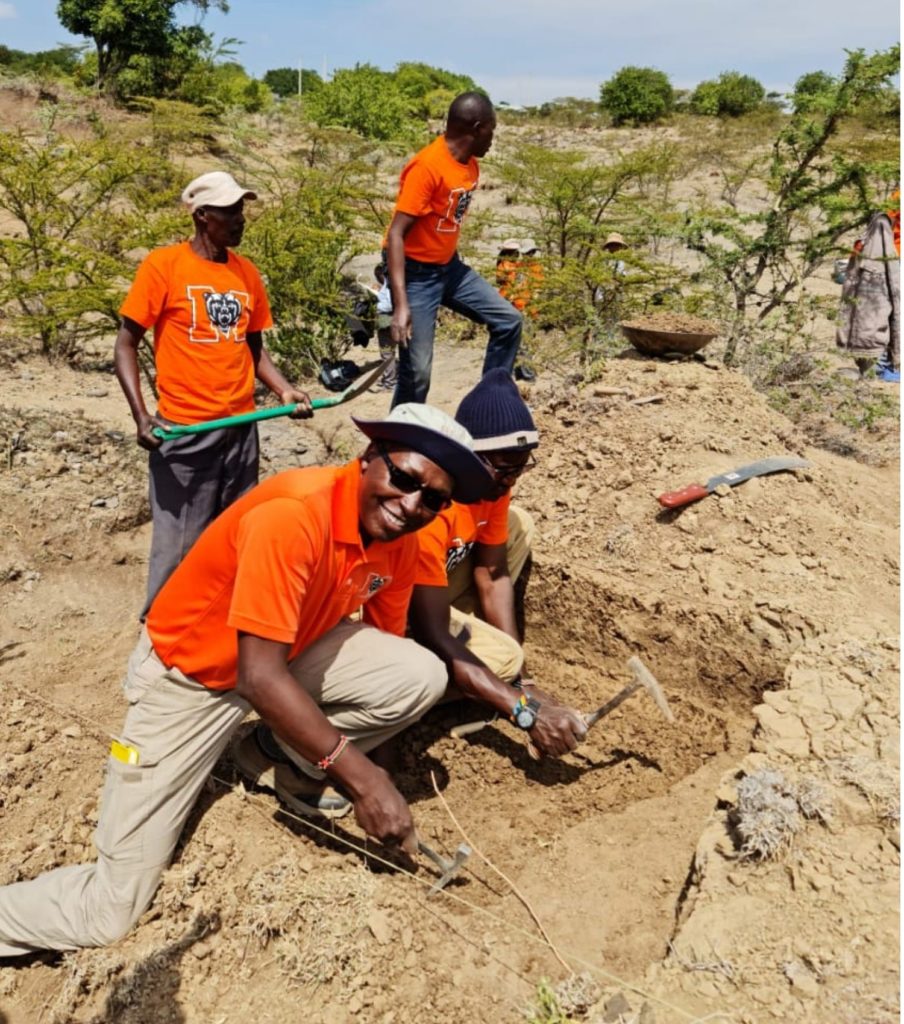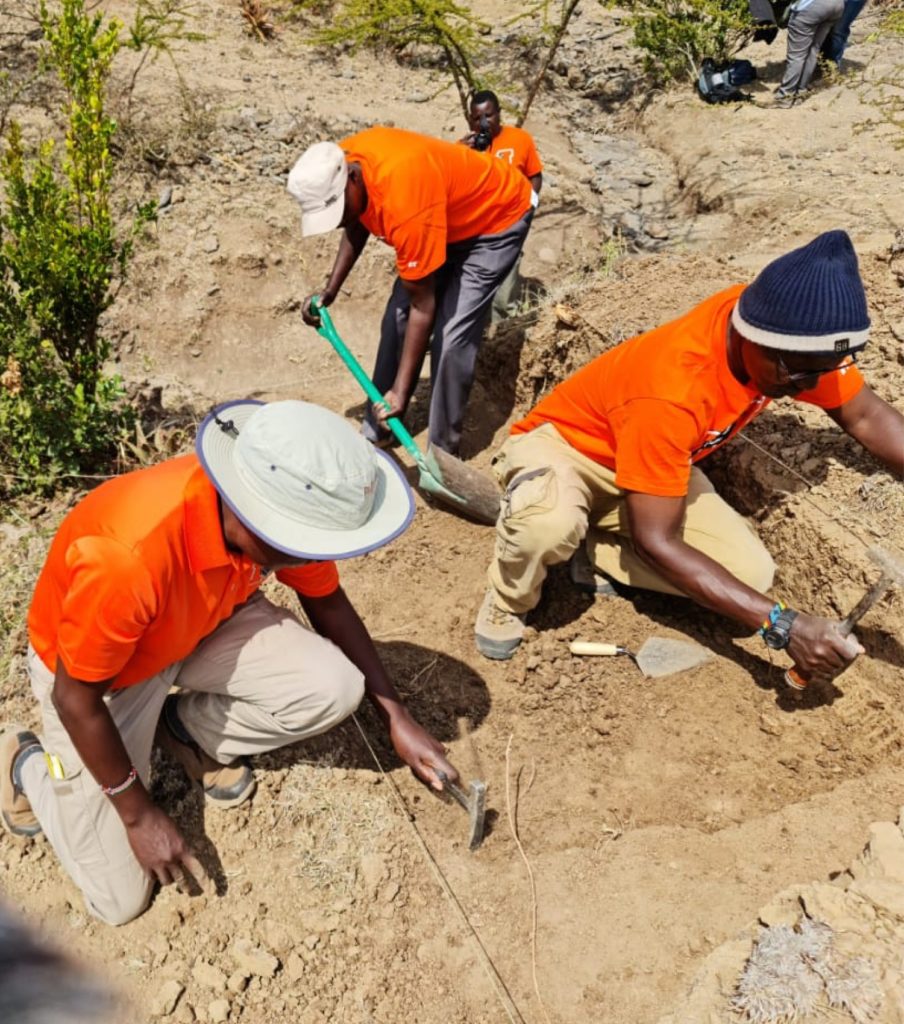A Mercer University professor spent two weeks this summer excavating a prehistoric site in Kenya where a skull fragment of an early human ancestor was found late last year.
Since December 2018, Dr. Francis Kirera, an assistant professor of anatomy at the School of Medicine, has been leading a team of researchers at the site in Ngobit, located in the Central Highlands. The uncovering of the hominin fossil by Kenyan archaeologist Richard Kinyua was a major discovery.
“It’s very rare to find human fossils,” Dr. Kirera said. “It takes researchers many years, with some projects taking several decades to uncover a single human remain.
“The discovery of the hominin remains is a big boost to the project’s future prospects.”

Only very few areas in the world produce these types of fossils, he said, and the vast majority of them are found along the East African Rift Valley. In this area, the Earth’s tectonic plates have moved apart, creating a channel that exposes what has been buried beneath the surface.
“This is the first time we are finding fossils away from the rift valley, so it is a big deal to the scientific field,” he said.
The location of the Ngobit site is also significant because it is at a high elevation. Most of the well-known sites in East Africa are all located in lowlands areas along the East African Rift Valley.
“The area gets very cold, especially at night. You have to wear really warm clothes and stuff like that,” he said. “And then you start thinking, ‘What were these guys doing here those many years back?’”
One idea is that the site served as a “refugium,” meaning a place where animals and early humans could take refuge from unsuitable surrounding areas.
“When the African climate was getting extremely dry, probably animals and humans were moving into this high elevation where they could take a kind of refuge,” Dr. Kirera said. “Probably, some of them never went back. They changed; they became new species.”
“That’s the kind of hypothesis we are working on, and this becomes very important to the science because we are starting to ask questions like, ‘What were other regions’ contributions to the story of human evolution?”
The team working this summer also included Dr. Veronica Waweru, an archeologist from Yale University; Dr. Christine Omuombo, a geologist from the University of Nairobi; Dr. Nasser Malit from the State University of New York at Potsdam; and Dr. Rahab Kinyanjui from the National Museums of Kenya.
During the most recent visit, they found a number of stone tools, identified a potential new fossil species of antelopes, mapped the site digitally and collected soil samples for dating. It’s likely the fossils at the site date back around half a million years, Dr. Kirera said.
The team will continue excavating the site in the coming years. Long-term, he would like to take students to Kenya in the summer to expose them to fieldwork and Kenyan culture.












